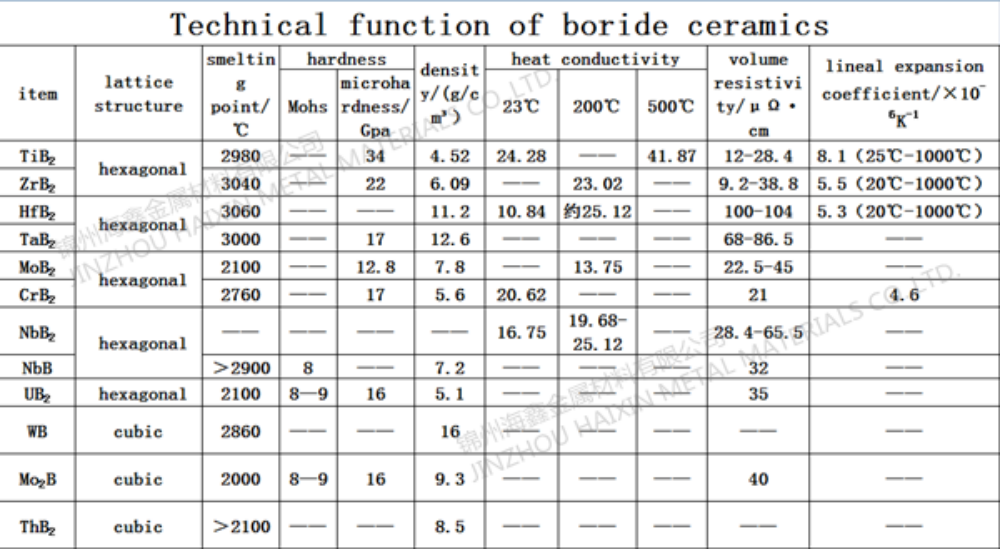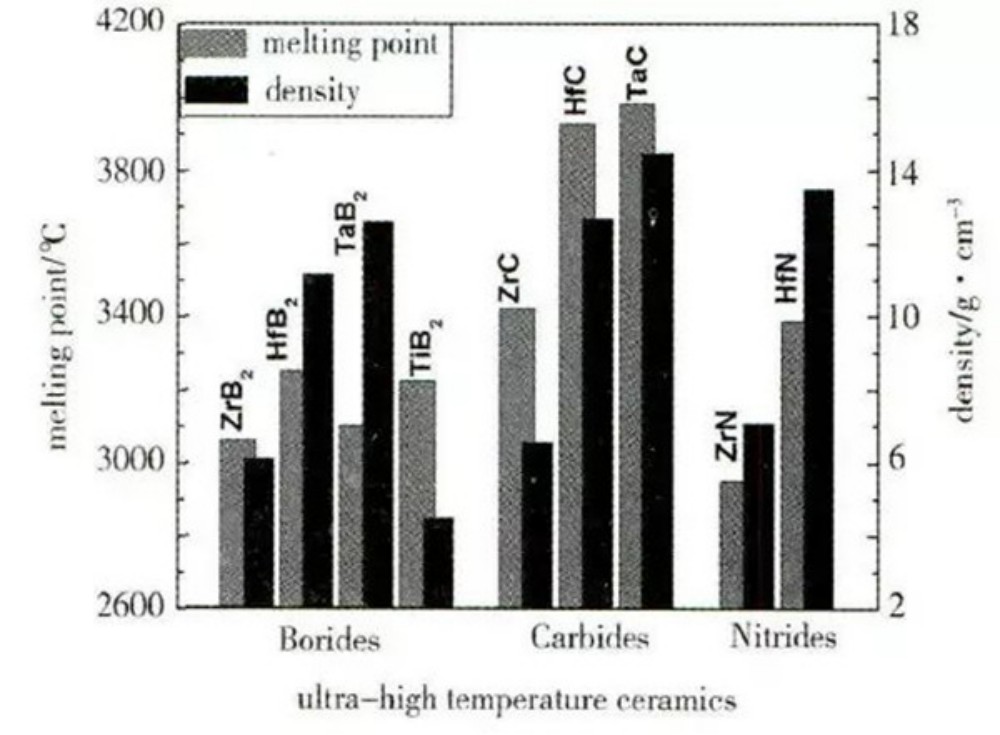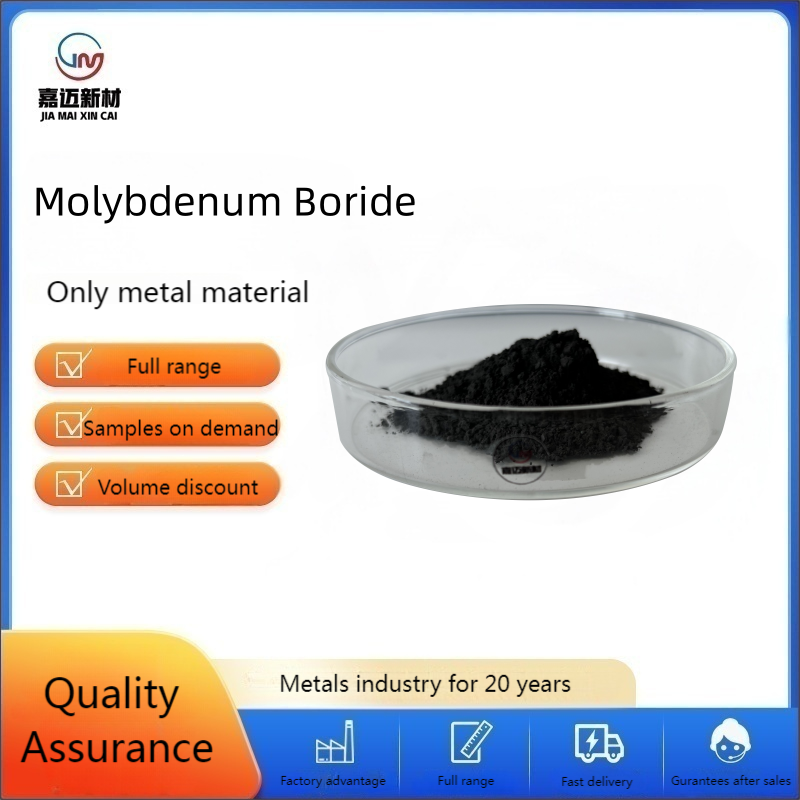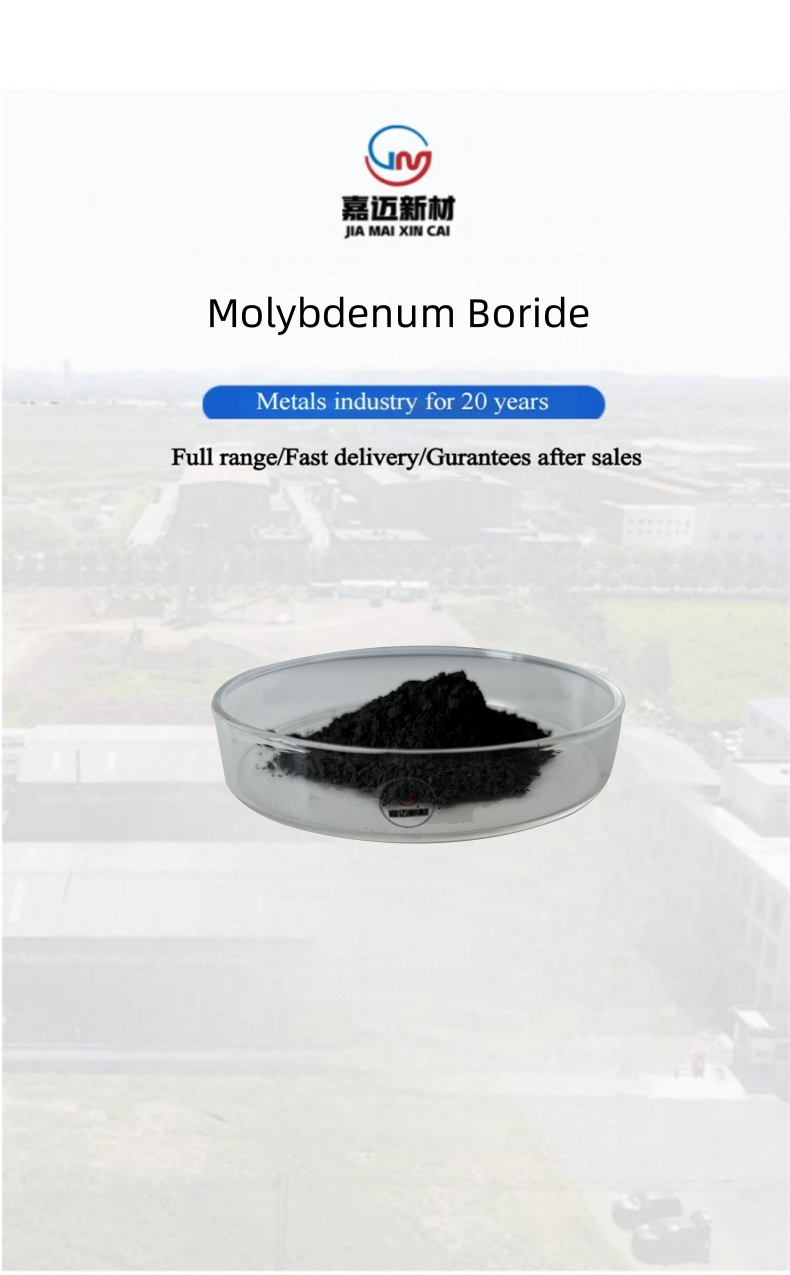

Product Name: Molybdenum Monoboride (MoB)
Specification: 0.8-10um (D50)
Appearance: Irregular
Color: Black Grey
Features: high hardness, low relative friction coefficient, chemical stability, wear and corrosion resistance, wear resistance, and high temperature resistance
Application: In the fields of metal ceramics, wear-resistant coatings, high-temperature resistors, pot liners, fill in the blank spray coating, and corrosion-resistant chemical equipment

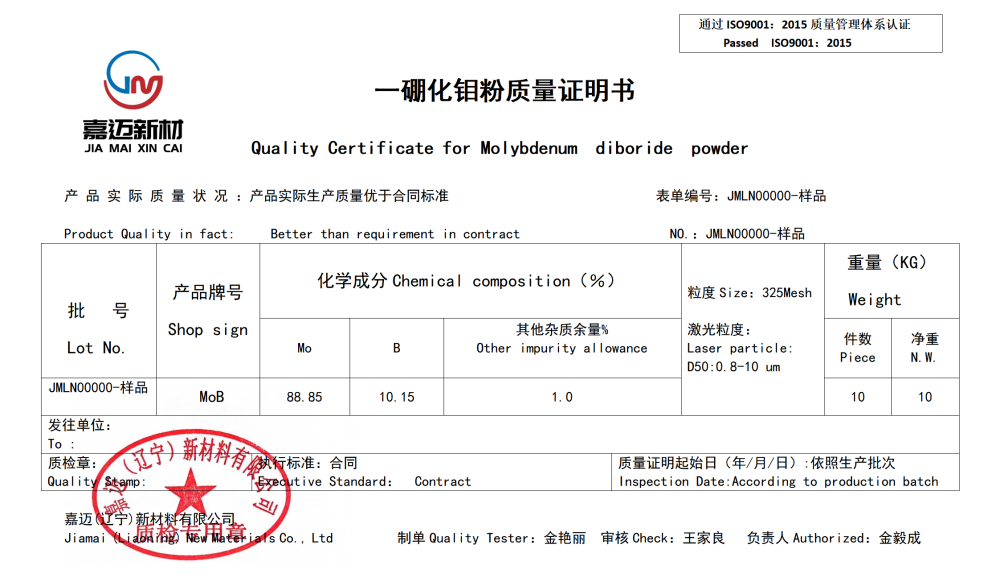

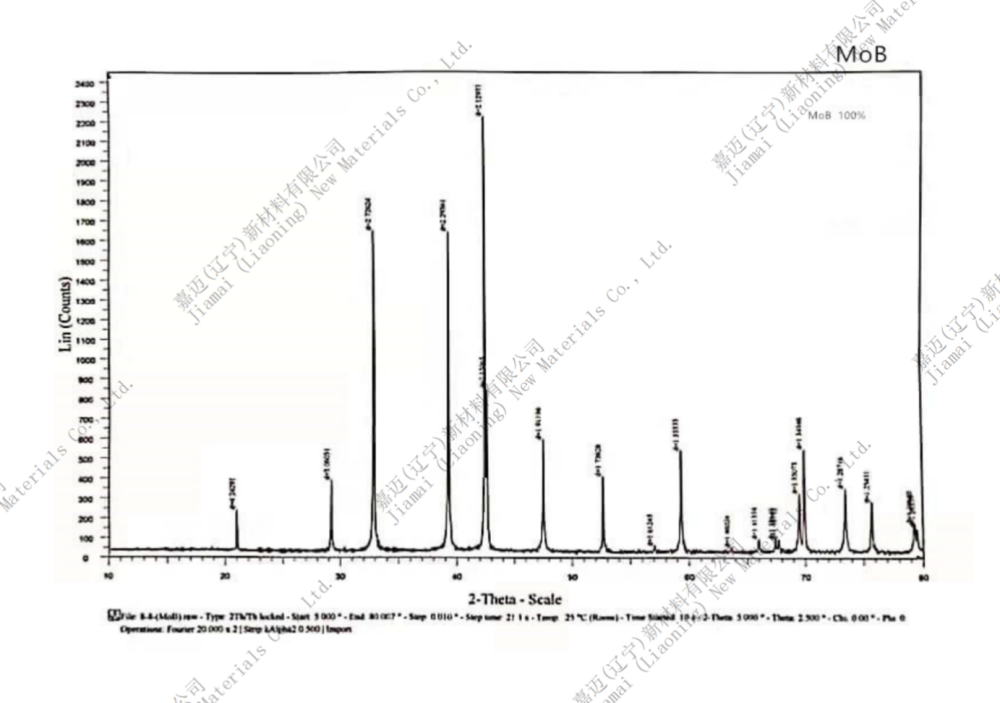

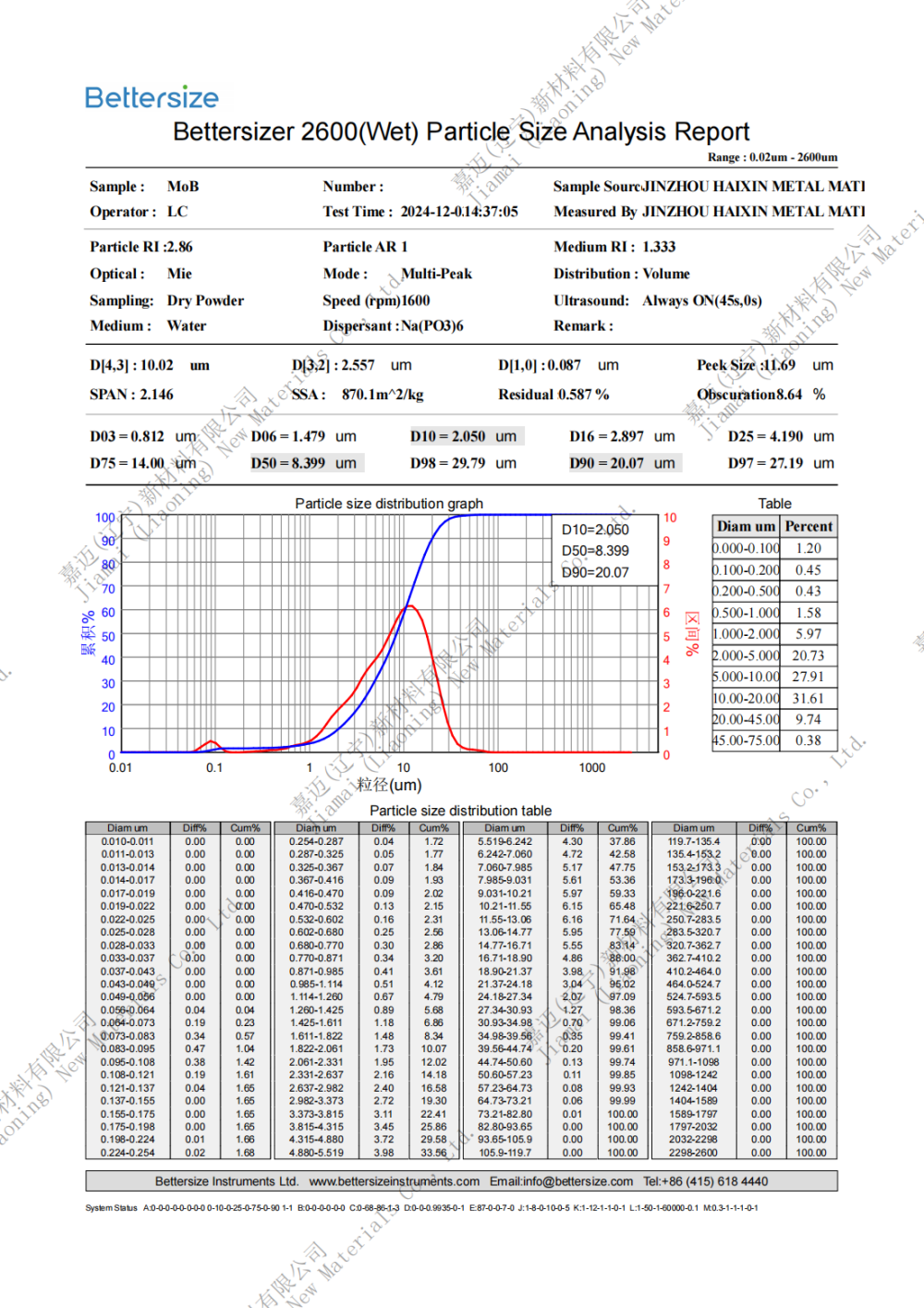

Chinese name: Molybdenum monoboride/molybdenum diboride
MOLYBDENUM BORIDE
Molecular formula: MoB /MoB2
MOL File: 12006-98-3.mol
Appearance: Black grey powder
Density: 8.65g /cm3 at 25 °C
EINECS: 234-492-5
Molecular weight: 106.75
Melting point: 2180°C
Properties: Molybdenum boride has high hardness and low relative friction coefficient, chemical stability, corrosion resistance, damage resistance and other characteristics.
Preparation method:
1. Using reduction method: boron oxide and molybdenum oxide in the presence of carbon, high temperature reduction.
2. Molybdenum and boron powder react under vacuum conditions of 1300 ~ 1400℃.
3. When boron is steamed on molybdenum (or vice versa), molybdenum boride can be formed on the interface.
Purpose:
1. Ceramic coating: molybdenum boride cermet has high hardness and low relative friction coefficient, and the material is applied to the sliding friction surface, which plays a role in reducing wear. For example, molybdenum boride coating is applied to the inner wall of engine cylinder liner. At the same time, because the material has low reactivity with liquid zinc, it is used in foreign countries for continuous hot-dip galvanized submerged roller surface spray material to protect the submerged roller from liquid zinc erosion.
2. Molybdenum boride is used as an efficient catalyst for polysulfide REDOX for high energy density lithium-sulfur batteries. The high conductivity of molybdenum boride nanoparticles and the abundance of catalytic active centers enable fast REDOX kinetics of LIPS on a high sulfur supported electrode (6.1 mg cm-2). In addition, the hydrophilicity of molybdenum boride and its good wettability to the electrolyte can promote the penetration of the electrolyte and the REDOX of LiPS, and ensure the high sulfur utilization rate under the condition of dilute electrolyte.
3. Superhard materials: Each molybdenum atom of borides contains 4 to 5 boron atoms. MoB5 has a Vickers hardness of 37 to 39GPa, which makes it a potential superhard material.
4. Molybdenum boride has high hardness, low friction coefficient and good wear resistance and corrosion resistance, suitable for the manufacture of special alloys, especially in the sliding friction surface to reduce wear .
5. Molybdenum boride melting point at 2600℃, can do high temperature resistant spray layer. Special alloy with good wear resistance, heat resistance and temperature linear relationship, can be used for cermet, wear-resistant coating, high-temperature resistance, pot lining, fill-in-blank spraying and corrosion resistant chemical equipment, transition metal borides in technical applications are potential substitutes for traditional cemented carbide and high hard materials. And with the progress of science and technology, the application field of molybdenum boride compounds will be further expanded, this material will show more excellent application value and huge market prospects.
Packing storage:
This product is inert gas anti-static packaging, should be sealed in a dry, cool environment, should not be exposed to the air for a long time, prevent moisture agglomeration, affect the dispersion performance and use effect.
